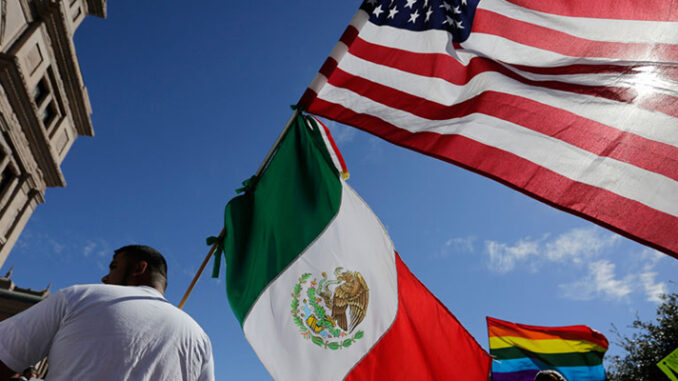
Mexicans falling numbers are not primarily a consequence of increasing deportations. ICE removals to Mexico have slightly fallen under the Trump. The better explanation is that fewer Mexicans want to come to the US.
by David J. Bier
From 2017 to 2019, the immigrant share of the U.S. population failed to increase at all for the first time since the Great Recession and probably for the first time in decades during an economic expansion. According to recently released data from the Census Bureau’s American Community Survey, a major reason for the stagnation is that America’s Mexican immigrant population has started to decline rapidly, dropping nearly 642,000 from 2016 to 2019.
As seen in Figure 1, Mexican immigrants reached 11.7 million in 2010 before fluctuating between 11.5 and 11.7 from 2011 to 2016, but then, starting in 2017, the numbers rapidly declined to 10.9 million. The last time the population was this small was in 2004. Meanwhile, the Mexican share of the immigrant population declined from a peak of 31 percent in 2005 to 24 percent in 2019.
As Figure 2 shows, the share of immigrants from Mexico rose rapidly from 1970 to 2000 before declining slightly by 2010, and then sharply by 2019 with most of the decline from 2017 to 2019. The 5‐percentage point decline from 2010 to 2015 is by far the largest in history for Mexicans. No decade before the 2010s saw a decline of more than 0.2 percentage points. The era of Mexican immigration is wrapping up in a hurry under President Trump.
Mexico is just the fourth country in American history since 1850 to be the most common origin country for U.S. residents. Figure 3 compares the Mexican share of the immigrant population to the other three countries. Ireland led all countries from 1850 to 1870, followed by Germany from 1880 to 1920, followed by Italy from 1930 to 1970. Mexico’s five decades dominance is comparable to both Italy and Germany, but its peak was lower than the peak of 42.8 percent for Ireland in 1850. Unfortunately, the Census data on origin countries only date to 1850, so it’s unclear how long Irish dominance lasted, but the Irish share may have peaked in 1850 after the potato famine.
Mexicans falling numbers are not primarily a consequence of increasing deportations. Indeed, ICE removals to Mexico have slightly fallen under the Trump administration. The better explanation is that fewer Mexicans want to come to the United States, and more are returning. The surprising element is that unlike the stagnation in the immigrant population during the Great Recession, this decline occurred during a period of almost unparalleled economic expansion in the United States, while Mexico’s economy shrank in 2019. Perhaps the president’s anti‐Mexican rhetoric is influencing Mexicans’ personal behavior.
David J. Bier is an immigration policy analyst at the Cato Institute’s Center for Global Liberty and Prosperity.



